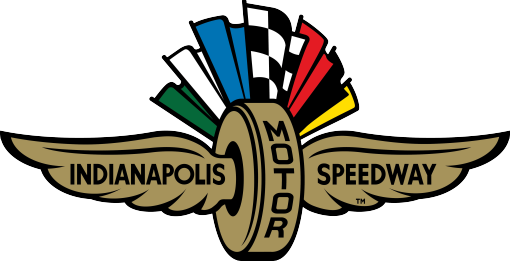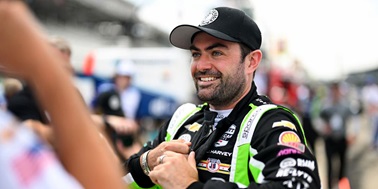Radio broadcasts emanating from the Indianapolis 500 date all the way back to the early 1920s, when the handful of local residents who even owned a receiver in 1922 were able to pick up crackle-punctuated, fragmented descriptions of the race from what were basically HAM radio operators. A more formidable effort came in 1924 with periodic updates heard over a station from Chicago, WDAP, which would very shortly become the powerhouse WGN. A second came in 1925, which had just debuted six months earlier from the Indianapolis Athletic club, using the call letters WFBM. This was effectively the grandfather of today’s WRTV.
Another significant step took place in 1928 when NBC came in to air the final hour of the race loaded for bear by sending the already-legendary Graham McNamee as its anchor. In spite of having “called” such historical events as the 1924 Republican convention and the infamous Jack Dempsey-Gene Tunney “long count” boxing match, McNamee later wrote quite emphatically in the 1929 race program that the start of the “500” was the most spectacular sight he had ever witnessed. He would continue returning to the race well into the late 1930s, while another famous name, Ted Husing, was on hand for CBS in 1936.
When the “500” resumed after World War II, the prime networks did not return en masse. National coverage came instead from the Mutual Radio Network, an organization which rather than generate its own programming, would tend to pick up something from a subscribing station and make it available to others within the network.
Mutual’s immediate pre-war track coverage had been provided by Cincinnati’s WLW, but by 1946 it had aligned itself with a comparatively new Indianapolis station, WIBC. Mutual would send in Bill Slater from New York each year to work with an all-WIBC crew and to co-anchor with the station’s sports director, Gene Kelly (not MGM’s!). When it was rumored ill health might prevent Slater from coming in 1950 – and Kelly had just left, eventually to become the radio voice of the Philadelphia Phillies – 26-year-old Sid Collins was placed on standby. As it turned out, Slater came at the last minute anyway, but he thoughtfully asked Collins to co-anchor with him.
For reasons unknown, Mutual decided to hike its advertising rates by a considerable margin for 1951 and with its prime sponsor – Perfect Circle Piston Rings of Hagerstown, Ind. – declining and nobody else immediately standing in the wings, there existed the very real possibility of no network coverage at all. The track was open for practice and, in fact, several cars had already qualified when IMS President and General Manager Wilbur Shaw announced an 11th-hour arrangement whereby WIBC would fill the void, offering the usual intermittent reports to Mutual stations with Collins as anchor.
During the ensuing months, other local stations began exploring the possibilities of setting up some kind of a network, unaware that WIBC’s sales manager, Gil Berry, was already well along with such a concept. In early May 1952, Shaw and IMS Owner Tony Hulman announced the formation of the Indianapolis Motor Speedway Radio Network, to be headed up by Berry and staffed exclusively by announcers and technicians from WIBC.
There has been a perpetuating myth, persisting for over 50 years, that the race was always broadcast in its entirety. In fact, the IMS Network’s debut was with a virtual duplicate of Mutual’s format of 30 minutes at the beginning, with a 15-minute lead-in to the 11 a.m. start, another 30 minutes at the end, and a series of updates slotted in between regular programming. It was, therefore, in 1953 and not 1952 when the history-making 4 ½-hour broadcasting marathon was first undertaken. It went on the air at 10:45 a.m. and did not leave until after Bill Vukovich had been interviewed in Victory Lane at 3:15 p.m. Of considerable significance, locally at least, was that as the result of several wintertime meetings, all of the other stations in town had now been included in a pooling of talent. Although WIBC continued to serve as the “flagship” by providing the technology, the securing of stations and so forth, at least one announcer from every station in town – WFBM, WISH, WIRE and WXLW – could now be heard broadcasting over those of his four rivals.
The impact of the network was phenomenal. From 26 stations in 1952, the 1953 count ballooned to around 135 as arrangements were made to carry the broadcast on a delayed basis to the Armed Forces Network in Europe, plus the Armed Forces Radio Service in the Far East.
A quartet of half-hour qualification wrap-up shows were added in 1954, and the station count rose to 210. Those who listened heard another tradition in the making. A number of station managers had been asking if some sort of standard “out cue” could be used to warn their engineers of an approaching commercial break, and when Alice Greene, a 21-year-old WIBC copywriter suggested to Collins, “Stay tuned to the greatest spectacle in racing,” another “500” tradition was born.
A year later, with the country then comprising 48 states rather than 50, all were accounted for among the 239 stations on Race Day.
The station count surpassed 300 when Latin America joined up for 1957, and a rebroadcast to South Africa in 1960 pushed it even higher. It was topping 700 by 1963 as short-wave transmissions began, and it jumped to 800 when the Canadian Broadcasting Company took the broadcast for the first time in 1964. Inasmuch as it was also being beamed from New York to South America with a Spanish translation via short wave, it was estimated that the “500” could now be heard in virtually every country in the world.
In the mid-1950s, Collins began inviting the audience to write in and indicate from whence and under what circumstances they were listening. Some responded immediately by telegram, and the estimate on mail generated by each broadcast numbered at around 5,000 pieces. It came from all over the world, and the stories were as diversified as they were emotional, those from soldiers stationed overseas being the most moving.
Another unique aspect of the network as it entered its third decade was that, by 1964, Indianapolis had eight radio stations, and every single one of them carried the broadcast in its entirety – rival announcers and all. In 1967 the “origination” duties were transferred, and although Collins continued to anchor with the other Indianapolis stations providing announcers, WTHI of Terre Haute, Indiana, became the “flagship” until the early 1990s when the IMS Radio Network became its own facilitator.
By the early 1970s, more than 1,000 stations carried the race, although it was always difficult to quote a precise number because of the overseas distribution plus the last-minute “sign-ups.” To this day, even as the corner announcers and pit personnel are preparing to leave for their posts, the telephone occasionally will ring in the trackside network office as yet another station has frantically decided at the last moment to come aboard. Even with the advent of live television and a much wider range of alternative programming, the Radio Network is still universally recognized as the world’s largest.
Collins passed away before the 1977 “500” and was succeeded by Paul Page, who anchored until he moved over to ABC television in 1988. Lou Palmer followed for two years before Bob Jenkins took over in 1990. Mike King, who had joined the Network in 1995 as a pit reporter, served as anchor between 1999 and 2013. Paul Page returned in 2014 and 2015, succeeded by Mark Jaymes, who continues to serve.




